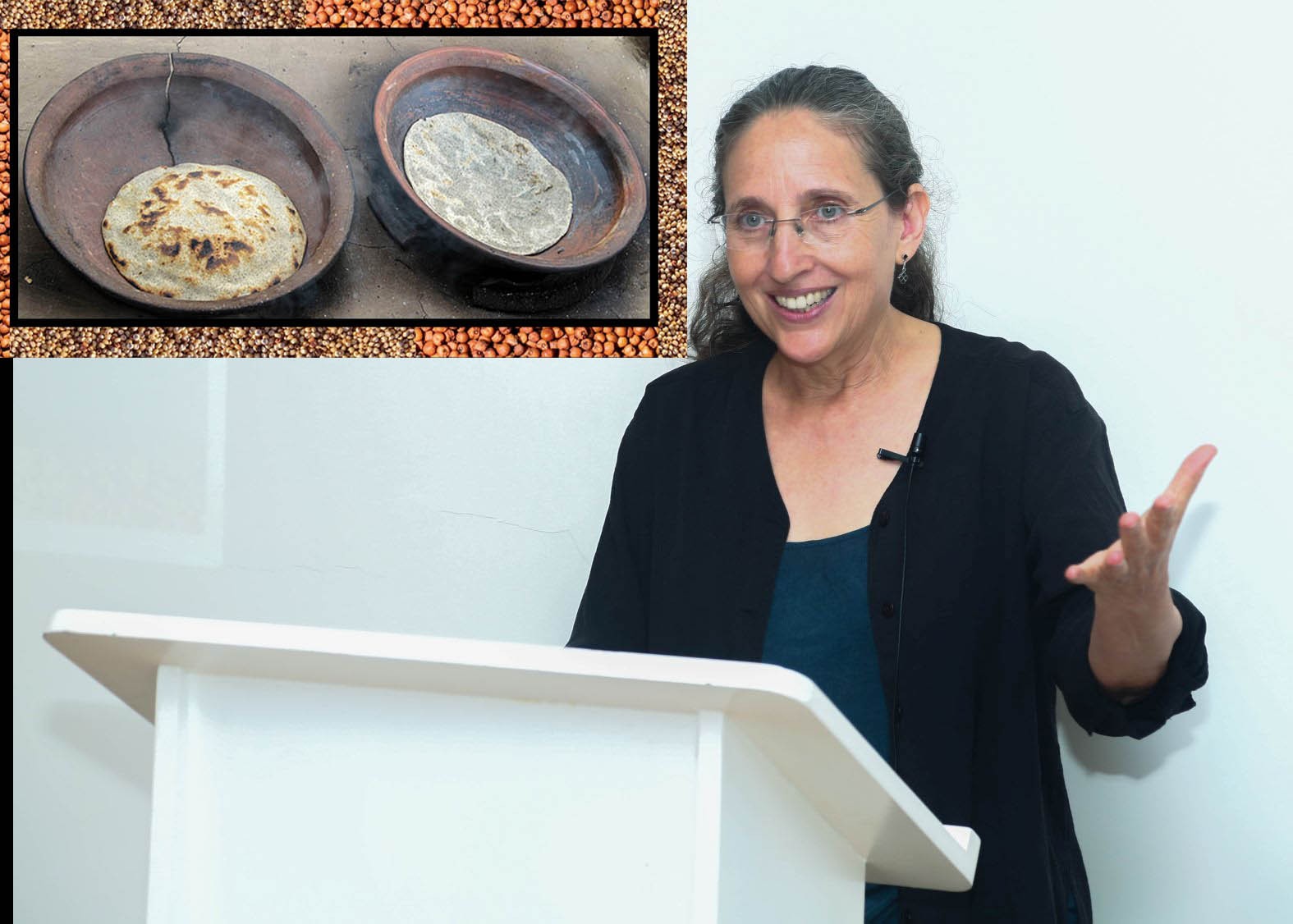Cereals and their Impact on Environment and Nutrition

India’s transition from a cereal importing to exporting country over the last fifty years is a testament to the remarkable success of the Green Revolution that heralded a surge in production of rice and wheat. While the ubiquitous roti remains a staple in many Indian diets, increased yields and consumption of select cereals have come at the expense of lower-yielding traditional coarse cereals such as pearl millet (bajra), sorghum (jowar), and finger millet (ragi). Yet, these nutrient rich coarse cereals have re-entered the plates of urban elites and imaginations of policy-makers through the trending garb of ‘nutri-cereals.’
Using long-term agricultural and climate data sets, Professor Ruth DeFries presented her interdisciplinary research on the impacts of changing cereal consumption in India in the public lecture, ‘The Many Sides of a Roti: Cereals and their Impact on Environment and Nutrition’ at Columbia Global Centers | Mumbai on January 15, 2019. Dr. DeFries is University Professor of Ecology and Sustainable Development at Columbia University and her research examines how the world’s demands for food and other resources are changing land use in tropical environments.
Commenting on the global food system, she noted, “We are living in a time of abundant and inexpensive calories which is, on one hand, a good thing because it has alleviated a lot of periodic famines… but on the other side there are more people who are overweight and obese in the world than there are people who are chronically hungry.” She explained that these problems are mirrored in India, which suffers from the triple burden of rising diabetes and obesity, widespread anemia and micronutrient deficiencies, and undernourishment, with India home to quarter of the world’s undernourished population.
Based on data from the National Sample Survey Organization, Professor DeFries pointed to the precipitous drop in consumption of coarse cereals out of the total consumption of cereals between 1966 and 2012; 35% to about 5% in rural India and 17% to about 2.5% in urban India. Although coarse cereals or C4 cereals are naturally better adapted to arid conditions and are more resilient to changes in climate, the production of rice and wheat, both C3 cereals and less suited to such conditions, surged ahead due to the immense impetus of the Green Revolution. The agricultural sector is the biggest consumers of water in the world and water security remains one of the most crucial yet precarious aspects of agriculture in India. The Green Revolution deepened Indian’s dependence on water with an increase in irrigation demand for wheat. Rice uses more water to produce a gram of iron compared to other cereals. But C3 cereals like rice are more sensitive to fluctuations in water availability and climate. Noting that India is a major hot spot for climate change, Professor DeFries posited that increased production of more resilient nutri-cereals could make farmers less vulnerable to such changes. Besides, rice emits the highest amount of greenhouse gases among cereals during cultivation, making nutri-cereals a more sustainable option from an environmental perspective.
The boost to rice production, coupled with its aspirational consumption status, is further complicated by studies that show milled rice is low in micronutrients. Large parts of India’s population suffer from micronutrient deficiencies. Loss of iron from declining consumption of C4 cereals has also not been compensated by other food groups, Professor DeFries’ research points. Even as the merits of nutri-cereals have been endorsed by the Indian Government in 2018 as vital for India’s food and nutrition security, their overall yields are smaller compared to wheat and rice in most parts of India. This poses a challenge to a country where agricultural yields and food costs are of primary concern to consumers in poor households.
While nutri-cereals may not be a panacea for all problems, Professor DeFries presented optimized scenarios for cereal production using variables such as nutrition, water usage, climate resilience and greenhouse emission. These projections can be useful for India’s mammoth public food distribution system, the largest food security net in the world. Beyond projections and policies however, socio-cultural factors that influence the preferences and habits of farmers and consumers also have a huge bearing on production and consumption patterns, Professor DeFries acknowledged.
Taking stock of the myriad issues at play while suggeting improvements in the Indian food system through nutri-cereal production and accompanying measures, Professor DeFries concluded, “For thirty-five years I have been observing massive changes in diets in the urban and rural populations and I am glad to see so many people thinking about nutri-cereals. But are they just a fad for the elite or can they make a dent in the environmental and nutritional problems that we face here?”